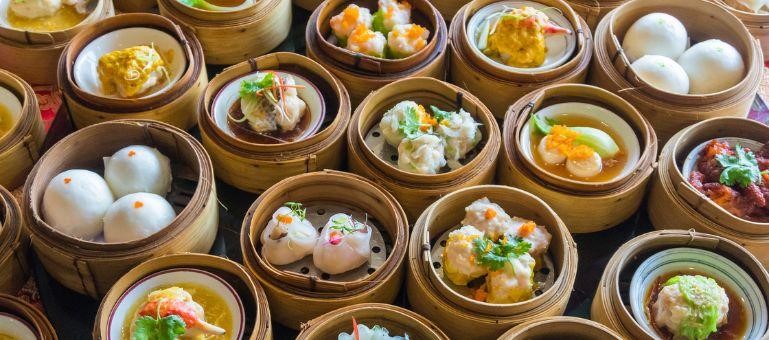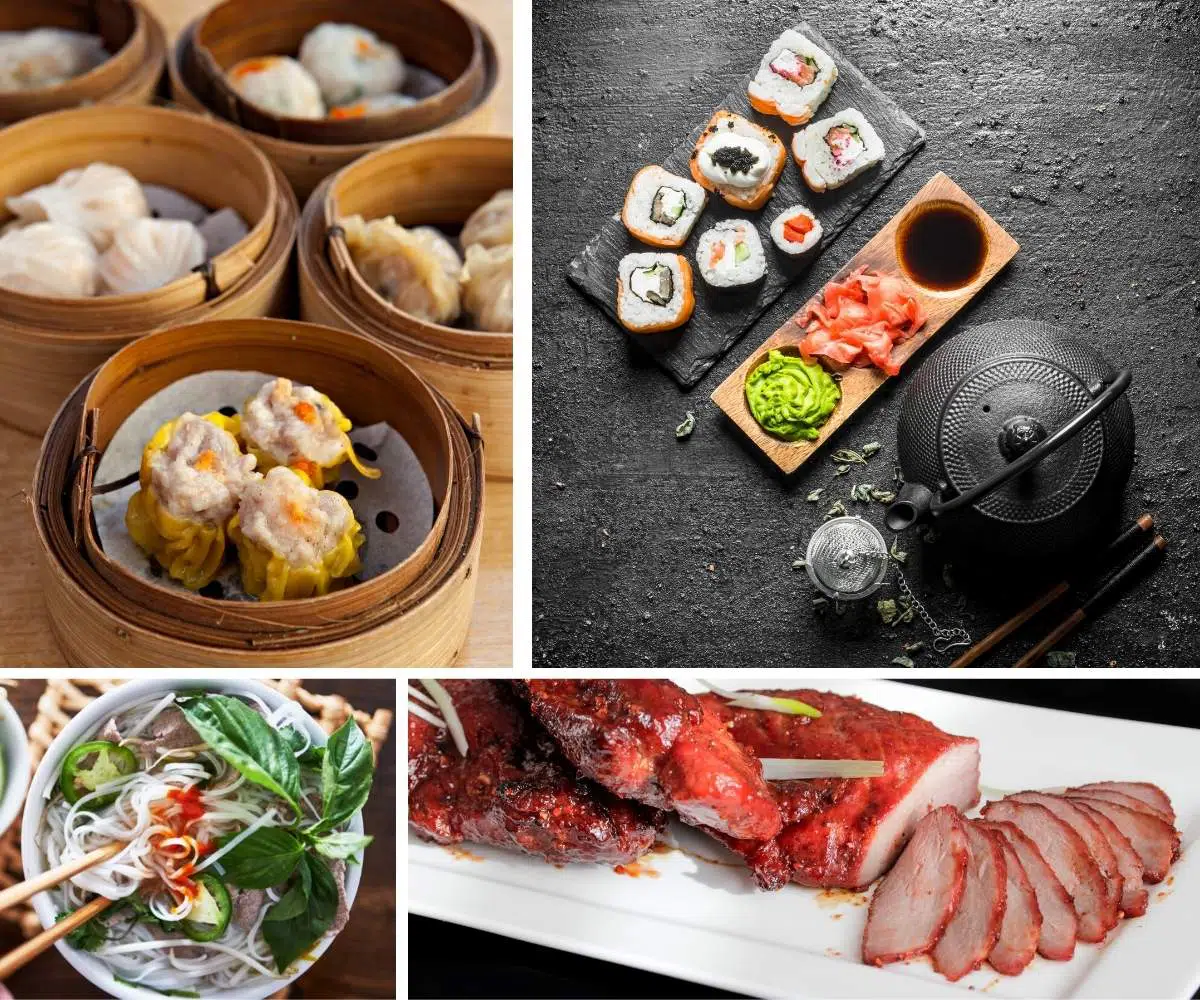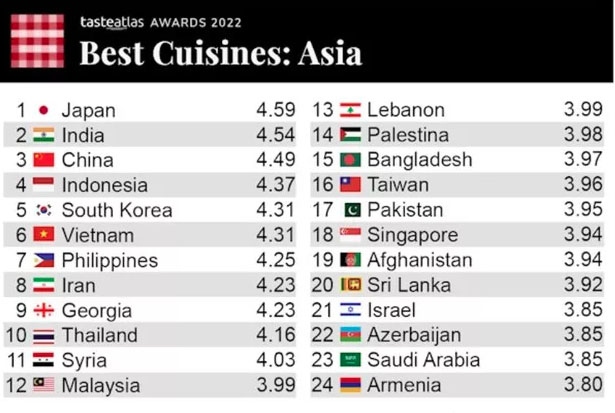Top Asian Cuisine: A Flavorful Journey Through the Heart of Asia
Asian cuisine is renowned for its vibrant flavors, rich textures, and unique culinary techniques. Whether you’re a seasoned food enthusiast or someone looking to explore new tastes, Asian cuisine offers a diverse and exciting experience. From street food vendors in Thailand to fine dining establishments in Japan, there’s something for everyone. In this article, we’ll explore the top Asian cuisines that have captured the hearts of food lovers worldwide.

1. Chinese Cuisine: A Rich Culinary Tradition
Chinese food is one of the oldest and most influential culinary traditions in the world. Known for its balance of flavors — sweet, sour, salty, bitter, and umami — Chinese dishes often combine a variety of textures, from crispy to tender. The food culture is centered around family meals and communal dining, and the variety is immense, ranging from dim sum to Peking duck.
Famous Chinese Dishes:
-
Dim Sum: Small bite-sized portions served in steamer baskets, often enjoyed during brunch.
-
Peking Duck: A delicacy known for its crispy skin and tender meat, served with pancakes and hoisin sauce.
-
Sweet and Sour Pork: A classic dish featuring tender pork chunks coated in a tangy sweet sauce.
Chinese cuisine also varies significantly across regions, with each area offering its own distinctive flavors and cooking styles. For instance, Cantonese cuisine is known for its delicate flavors, while Sichuan cuisine is famous for its bold, spicy dishes.
Explore more about Chinese Cuisine

2. Japanese Cuisine: Elegance in Simplicity
Japanese cuisine emphasizes fresh ingredients, minimal seasoning, and careful presentation. Known for its delicate flavors, Japanese dishes highlight the natural tastes of the ingredients. Sushi, sashimi, and tempura are just a few examples of Japan’s global culinary influence.
Popular Japanese Dishes:
-
Sushi: Raw fish, often served with vinegared rice, seaweed, and various fillings.
-
Tempura: Lightly battered and deep-fried vegetables and seafood.
-
Ramen: A savory noodle soup that has become a worldwide favorite.
The focus on presentation and the aesthetics of food is a key characteristic of Japanese cuisine. It’s not just about flavor; it’s about creating a visual and sensory experience that enhances the meal.
Learn more about Japanese Food

3. Indian Cuisine: A Symphony of Spices
Indian cuisine is characterized by its bold use of spices, creating dishes with complex layers of flavor. From creamy curries to tandoori dishes, Indian food is an explosion of color, aroma, and taste. The spices used in Indian cooking are not only for flavor but also for their health benefits.
Must-Try Indian Dishes:
-
Butter Chicken: A rich, creamy chicken dish cooked with aromatic spices.
-
Biryani: A flavorful rice dish often served with marinated meats or vegetables.
-
Samosas: Fried pastry pockets filled with spiced potatoes, peas, and sometimes meat.
Indian cuisine is also known for its diversity, with regional variations that reflect the country’s history and cultural influences. In the south, rice and coconut-based dishes dominate, while in the north, wheat-based dishes like naan and paratha are more common.
Discover the Taste of Indian Cuisine
4. Thai Cuisine: A Perfect Balance of Flavors
Thai cuisine is famous for its harmonious balance of sweet, sour, salty, and spicy elements. It’s a cuisine that uses fresh herbs and ingredients like lemongrass, basil, and lime to create dishes that are both bold and refreshing.
Popular Thai Dishes:
-
Pad Thai: Stir-fried noodles with shrimp, tofu, peanuts, and a tangy tamarind sauce.
-
Tom Yum Soup: A hot and sour soup flavored with lemongrass, lime, and chili.
-
Green Curry: A spicy curry made with green curry paste, coconut milk, and various meats or vegetables.
Thai food is known for its street food culture, with vendors serving up fresh, hot meals on almost every corner. The combination of flavors and textures makes Thai cuisine a favorite around the world.
Experience the Bold Flavors of Thai Cuisine

5. Vietnamese Cuisine: Fresh, Healthy, and Flavorful
Vietnamese cuisine is celebrated for its light, fresh flavors and healthy ingredients. Herbs, vegetables, and fresh meats are used in abundance, making this cuisine both nutritious and delicious. Pho, a noodle soup, is one of the most iconic dishes to come from Vietnam.
Notable Vietnamese Dishes:
-
Pho: A fragrant noodle soup typically made with beef or chicken.
-
Bánh Mì: A Vietnamese sandwich made with crispy baguettes, meat, and fresh vegetables.
-
Gỏi Cuốn: Fresh spring rolls filled with shrimp, rice noodles, and vegetables.
Vietnamese food is often served with a variety of fresh herbs and condiments, allowing diners to customize their dishes to their taste. It’s a cuisine that emphasizes the use of fresh, seasonal ingredients to create balanced meals.
Explore the Deliciousness of Vietnamese Cuisine
6. Korean Cuisine: A Bold and Flavorful Experience
Korean cuisine is known for its bold, spicy, and flavorful dishes. Kimchi, a fermented vegetable dish, is a staple in Korean meals, and the cuisine as a whole is rich in vegetables, meats, and fermented foods that are packed with flavor.
Popular Korean Dishes:
-
Kimchi: Fermented vegetables, typically cabbage or radish, spiced with chili and garlic.
-
Bibimbap: A rice dish topped with various vegetables, meats, and a fried egg.
-
Bulgogi: Marinated beef grilled or stir-fried with vegetables.
Korean cuisine is also famous for its banchan, small side dishes served with every meal. These side dishes add variety and flavor to the meal, creating a satisfying dining experience.
Dive into the Flavors of Korean Cuisine
FAQs about Asian Cuisine
1. What makes Asian cuisine so unique?
Asian cuisine is diverse, with each region offering a unique approach to cooking. The use of fresh ingredients, bold flavors, and intricate cooking techniques sets it apart from other global cuisines.
2. What are some common ingredients in Asian cuisine?
Common ingredients include rice, noodles, soy sauce, ginger, garlic, chili, and a variety of herbs like cilantro and basil. These ingredients are used to create complex, balanced flavors.
3. How do I make Asian food at home?
Making Asian food at home requires access to the right ingredients. Many grocery stores now carry specialty Asian ingredients. Start with simple recipes like stir-fries or noodle soups and gradually explore more complex dishes.
4. Is Asian food healthy?
Many Asian dishes are healthy, especially those that use fresh vegetables, lean meats, and healthy fats like sesame oil. However, some dishes, particularly fried foods, can be high in calories, so moderation is key.
Conclusion: Embrace the Global Taste of Asian Cuisine
Asian cuisine is not just about food; it’s an experience. From the comforting bowls of pho to the spicy heat of Sichuan cuisine, the flavors are bold, diverse, and unforgettable. As global food trends continue to evolve, Asian dishes remain at the forefront of culinary innovation. Whether you’re dining in a five-star restaurant or grabbing a bite at a local street food stall, Asian food offers something for everyone.
For those looking to delve deeper into the world of Asian cuisine, there’s no better time than now. From the comfort of your home, you can explore the complex flavors and textures of Asia’s top dishes.


